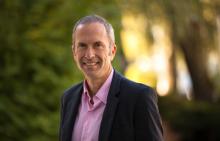How I got here
I have enjoyed science from as early as I can remember and upon entering 9th grade, physics teacher, Ted Barnhart, allowed me to enter independent study a year early. He just opened the door to a lab full of lasers, transistors, patch panels and measuring equipment and let me loose. I can't thank him enough for this head start.
I found an unused darkroom and began processing black and white photos, shooting and editing for the yearbook. I discovered a carbon arc projector way up in the projection room above the auditorium. By my senior year at high school, physics research on the Aerodynamics of Tractor Trailer trucks led me to the International Science Fair.
While at Penn State for eight years (BS and MD), I built a hammer dulcimer and played in a old time string band perhaps developing an ear for music. Studying acoustics while in residency (some forgettable paper taking photos of kitten tympanic membrane diameters), Ron Konrad gave me free rein to study ear anatomy, neurosurgery and push the boundaries of otolaryngology.
I ultimately switched after residency to the nascent field of laryngology as video and digital computer equipment were intertwining. Searching for a mentor in laryngology, otologist colleague Michael Teixido led me to Robert Bastian in Chicago and through him I learned to how to hear a voice disorder.
Now, as I take my turn teaching interested fellows about laryngology, I can, in retrospect, see how all this past, seemingly disparate fascination with music, aerodynamics, physics, sound, computers, film, anatomy, surgery, nerves, video and photography, actually fits together like a puzzle to formulate what has become a passionate career in the diagnosis and treatment of voice disorders.
Qualifications and Experience
Dr. Thomas' special area of interest is voice disorders, including singing, speaking, breathing, and swallowing. Dr. Thomas’ qualifications for the laryngeal or voice subspecialty of ear, nose, and throat surgery (otolaryngology), include a passionate interest in voice disorders, as well as extensive study including and beyond a six year residency training program in otolaryngology. Dr. Thomas has traveled widely, studying under numerous other laryngologists (otolaryngologists who specialize in throat disorders) in the United States, Canada, and in Europe. In addition, Dr. Thomas completed a concentrated fellowship at Loyola University in Chicago studying under Robert Bastian, M.D.
Fellowship
 Laryngology & Voice Disorders
Laryngology & Voice Disorders
Loyola University Medical School, Maywood, Illinois
July 1998 – December 1998
Membership
 American Acadmey of Otolaryngology Head and Neck Surgery
American Acadmey of Otolaryngology Head and Neck Surgery
American Medical Association
Oregon Academy of Otolaryngology
Board Certification
American Board of Otolaryngology
March 31, 1993
Nomination
 US News Top Doctor 2011
US News Top Doctor 2011
Studies Abroad
Laryngology – Dr. Marc Bouchayer, Lyons, France
September 1998
Sun Yat Sen School of Medicine, Guangzhou, China
September – November 1991
Residency
 Otolaryngology – Head and Neck Surgery
Otolaryngology – Head and Neck Surgery
Southern Illinois University, Springfield, Illinois
July 1987 – June 1991
 General Surgery
General Surgery
Southern Illinois University, Springfield, Illinois
July 1985 – June 1987
Education
 Doctor of Medicine
Doctor of Medicine
Pennsylvania State University, Hershey, Pennsylvania
July 1981 – June 1985
 Bachelor of Science
Bachelor of ScienceResearch Interests
- High definition endoscopic imaging of the larynx
- Feminizing the male voice
- Cricothyroidotomies and voice changes
- Use of frozen Botox
- The role of talkativeness in voice disorders
- Botulinum toxin in the treatment of spasmodic dysphonia
- Nonorganic voice disorders
- Partial laryngeal paralysis and diagnostic EMGs
Publications
- Thomas JP, Macmillan C. Feminization laryngoplasty: assessment of surgical pitch elevation. Eur Arch Otorhinolaryngol. 2013 Apr 30.
- Thomas, JP, Zubiaur, FM. Over-diagnosis of laryngopharyngeal reflux as the cause of hoarseness. European Archives of Oto-Rhino-Laryngology. March 2013, Volume 270, Issue 3, pp 995-999
-
Thomas, JP. Why is there a frog in my throat? a guide to Hoarseness. (1st ed.) Portland, OR: James P. Thomas. 2012
Zubiaur Gomar, FM, Thomas, JP.: Sobrediagnóstico de reflujo laringofaríngeo como causa de disfonía y otros trastornos de la voz". An ORL Mex Vol. 55, Núm. 2, 2010
-
Chang, CY, Chabot, P, Thomas, JP.: Age as a Factor in Responses to Botulinum Toxin Injection in Adductor Spasmodic Dysphonia Patients. in Laryngeal Diseases: Symptoms, Diagnosis and Treatments. Nova Publishers. 2010
Chang, CY, Chabot, P, and Thomas, JP. “Relationship of Botulinum Dosage to Duration of Side Effects & Normal Voice in Adductor Spasmodic Dysphonia.” Otolaryngoly – Head Neck Surgery. June 2007, 136(6):894-9.
Chang, CY and Thomas, JP. “Neo-ossification of the cricothyroid joint after elective cricothyroidotomy: A case report and discussion on the merits of this procedure.” Journal of Trauma – Injury Infection and Critical Care. November 2008, 65(5): 1146-1150.
Chang, CY and Thomas, JP. “Adult-Onset Iatrogenic Tracheomalacia.” Ear Nose Throat Journal. June 2008, 87(6): 312-314.
Thomas JP, Siupsinskiene N.: "Frozen versus fresh reconstituted botox for laryngeal dystonia." Otolaryngol Head Neck Surg. 2006 Aug;135(2):204-8.
Thomas, J.P. and Finch, R: “Esophageal Erosion: A Complication of Acrylic Fixation in Anterior Cervical Fusion.” Spine 1991 Oct 16(10):


